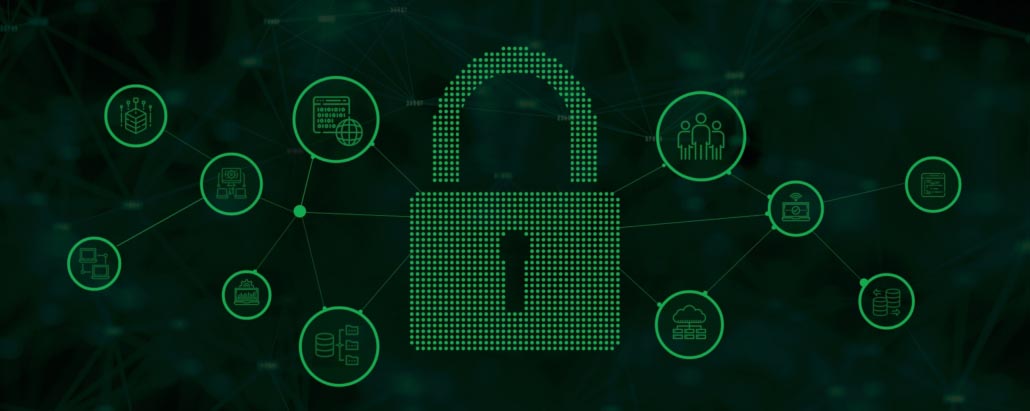Supply Chains in Open-Source Software
Open source is unceasingly on the rise among the vast majority of companies, software manufacturers and providers. However, this triumphant advance is also increasing the importance of monitoring the supply chain of the software used, which third parties have developed in accordance with open-source traditions. But not everyone using open-source software follows all the tried and true rules. Greenbone can help track down such mistakes. This blog post explains the problem and how to avoid it.
Vulnerabilities in Log4j, Docker or NPM
At the end of 2021, the German Federal Office for Information Security (BSI) officially sounded the alarm about a remotely exploitable vulnerability in the logging library Log4j. At the time, critics of open-source software promptly spoke out: open-source software like Log4j was implicitly insecure and a practically incalculable risk in the supply chain of other programs.
Although the open-source developers themselves fixed the problem within a few hours, countless commercial products still contain outdated versions of Log4j – with no chance of ever being replaced. This is not an isolated case: recently, the story of a developer for NPM (Node Package Manager, a software package format for the web server Node.js) caused a stir, who massively shook the trust in the open-source supply chain and the development community with his actually well-meant protest against the war in Ukraine.
Open Source in Criticism
It was not the first time that NPM became a target. The package manager was already affected by attacks at the end of 2021. At that time, developer Oleg Drapeza published a bug report on GitHub after finding malicious code to harvest passwords in the UAParser.js library. Piece by piece, the original author of the software, Faisal Salman, was able to reconstruct that someone had hacked into his account in NPM’s package system and placed malicious code there. The problem: UAParser.js is a module for Node.js and is used in millions of setups worldwide. Accordingly, the circle of affected users was enormous.
Again, the open-source critics said that open-source software like UAParser.js is implicitly insecure and a practically incalculable risk in the supply chain of other programs. Even more: open-source developers, according to the explicit accusation, incorporate external components such as libraries or container images far too carelessly and hardly give a thought to the associated security implications. For this reason, their work is inherently vulnerable to security attacks, especially in the open-source supply chain. Alyssa Shames discusses the problem on docker.com using the example of containers and describes the dangers in detail.
The Dark Side of the Bazaar
DevOps and Cloud Native have indeed had a major impact on the way we work in development in recent years. Integrating components that exist in the community into one’s own application instead of programming comparable functionality from scratch is part of the self-image of the entire open-source scene. This community and its offer can be compared with a bazaar, with all advantages and disadvantages. Many developers place their programs under an open license, precisely because they value the contributions of the other “bazaar visitors”. In this way, others who have similar problems can benefit – under the same conditions – and do not have to reinvent the wheel. In the past, this applied more or less only to individual components of software, but cloud and containers have now led to developers no longer just adopting individual components, but entire images. These are software packages, possibly even including the operating system, which in the worst case can start untested on the developer’s own infrastructure.
A Growing Risk?
In fact, the potential attack vector is significantly larger than before and is being actively exploited. According to Dev-Insider, for example, in the past year the number of attacks on open-source components of software supply chains increased by 430 percent, according to a study by vendor Sonatype. This is confirmed by Synopsis’ risk-analysis report, which also notes that commercial code today is mostly open-source software. As early as 2020, cloud-native expert Aquasec reported about attacks on the Docker API, which cyber criminals used to cryptomine Docker images.
However, developers who rely on open-source components or come from the open-source community are not nearly as inattentive as such reports suggest. Unlike in proprietary products, for example, where only a company’s employees can keep an eye on the code, many people look at the managed source code in open-source projects. It is obvious that security vulnerabilities regularly come to light, as in the case of Log4j, Docker or NPM. Here, the open-source scene proves that it works well, not that its software is fundamentally (more) insecure.
Not Left Unprotected
A major problem, on the other hand – regardless of whether open source or proprietary software is used – is the lack of foresight in the update and patch strategy of some providers. This is the only reason why many devices are found with outdated, often vulnerable software versions, which can serve as a barn door for attackers. The Greenbone Enterprise Appliance, Greenbone’s professional product line, helps to find such gaps and close them.
In addition, complex security leaks like the ones described above in Log4j or UAParser.js are the exception rather than the rule. Most attacks are carried out using much simpler methods: Malware is regularly found in the ready-made images for Docker containers in Docker Hub, for example, which turns a database into the Bitcoin miner described above. Developers who integrate open-source components are by no means unprotected against these activities. Standards have long been in place to prevent attacks of the kind described, for example to obtain ready-made container images only directly from the manufacturer of a solution or, better still, to build them themselves using the CI/CD pipeline. On top of that, a healthy dose of mistrust is always a good thing for developers, for example when software comes from a source that is clearly not that of the manufacturer.
Supply-Chain Monitoring at Greenbone
Greenbone demonstrates that open-source software is not an incalculable risk in its own program with its products, the Greenbone Enterprise Appliances. The company has a set of guidelines that integrate the supply chain issue in software development into the entire development cycle. In addition to extensive functional tests, Greenbone subjects its products to automated tests with common security tools, for example. Anyone who buys from Greenbone is rightly relying on the strong combination of open-source transparency and the manufacturer’s meticulous quality assurance, an effort that not all open-source projects can generally afford.
Markus Feilner is a consultant for IT security, digital sovereignty and open source strategies from Regensburg. He has been working with Linux since 1994. He has been writing studies, articles and blog posts for Greenbone since 2021.




